Plot summary
In this short story, somewhere on the Moon is hidden an extraterrestrial artifact. Two explorers, Jennings and Strauss, discovered it, but Jennings is dead and Strauss is insane. The artifact seems to be able to amplify and transmit thoughts, even to the extent of allowing one person to damage the mind of another. The only clues are a piece of paper with cryptic symbols, numbers, and letters written on it, and the babblings of the remaining member of the expedition, Strauss. Strauss is a member of the Ultras, a eugenicist society dedicated to eliminating "non-essential" people, reducing the human population to a few million who think like themselves. It is feared that the device could enable the Ultras to carry out their plan. The original paper has already disappeared, presumably stolen by an Ultra, and the investigators have only a copy to work with. The clues on the piece of paper seem to point to different locations on the Moon, but one stands out: a vertical arrow pointing upwards to the astrological symbol for Earth. One of the investigators realizes that the message means "go to Earth", or more exactly, "go to Urth". Jennings was a former student of the extraterrologist Wendell Urth. He died of a stab wound from Strauss, but not before rendering Strauss insane using the power of the artifact, and then going to some unknown place to hide it. The mysterious paper was found inside a spacesuit gauntlet.
When the investigators contact Wendell Urth, he recalls Jennings was a man who liked bad puns. Urth professes to enjoy a good pun, but found Jennings' efforts irritating. Reading the paper clue and listening to the audio log, he concludes that the symbols are mostly red herrings. They are too ambiguous and contradictory to be useful. Instead he tells the investigators the story of the astronomer Christof Klau, a German Jesuit mathematician and astronomer who modified the proposal of the modern Gregorian calendar. His audience is puzzled until he tells them that in the recordings of Strauss's ravings there are frequent mentions of the artifact as "the key" to the future of the world. He tells them that, with his brain activity heightened by the artifact, Jennings achieved his greatest pun by linking the words "clue" and "key". "Clue" sounds similar to "Klau"; the Latinized form of Klau was Clavius, which is similar to the Latin word "clavis", which means "key"; so the "clue" and the "key" to the mystery were the same thing, linked by the bilingual pun. Urth directs the investigators to look in the lunar crater Clavius, at the point where Earth would be directly overhead (indicated by the arrow pointing to Earth). He also tells them that their fears about the Ultras using the device are groundless. Strauss was unable to use the artifact himself. Urth also knew Strauss as a student, and was aware of his cold, calculating nature. He believes that the one human characteristic that the artifact operates on is empathy, a quality the Ultras do not possess.
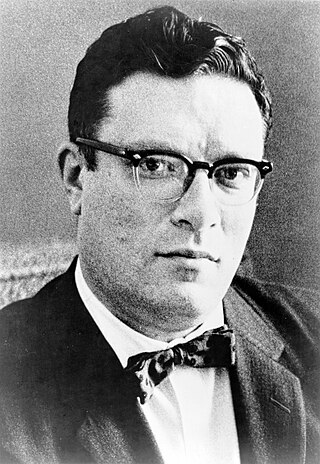
Isaac Asimov was an American writer and professor of biochemistry at Boston University. During his lifetime, Asimov was considered one of the "Big Three" science fiction writers, along with Robert A. Heinlein and Arthur C. Clarke. A prolific writer, he wrote or edited more than 500 books. He also wrote an estimated 90,000 letters and postcards. Best known for his hard science fiction, Asimov also wrote mysteries and fantasy, as well as popular science and other non-fiction.

The Caves of Steel is a science fiction novel by American writer Isaac Asimov. It is a detective story and illustrates an idea Asimov advocated, that science fiction can be applied to any literary genre, rather than just being a limited genre in itself.
This is a bibliography of the books written or edited by Isaac Asimov, arranged alphabetically. Asimov was a prolific author, and he engaged in many collaborations with other authors. This list may not yet be complete. The total number of books listed here is over 500. Asimov died in 1992 at age 72; a small number of his books were published posthumously.
"The Dying Night" is a science fiction short story by American writer Isaac Asimov. The story first appeared in the July 1956 issue of The Magazine of Fantasy & Science Fiction, and was reprinted in the collections Nine Tomorrows (1959), Asimov's Mysteries (1968), and The Best of Isaac Asimov (1973). "The Dying Night" is Asimov's third Wendell Urth story.

Murder at the ABA (1976) is a mystery novel by American writer Isaac Asimov, following the adventures of a writer and amateur detective named Darius Just, whom Asimov modeled on his friend Harlan Ellison. While attending a convention of the American Booksellers Association, Just discovers the dead body of a friend and protégé. Convinced that the death was due to murder, but unable to convince the police, Just decides to investigate on his own.
A feghoot is a humorous short story or vignette ending in a pun, where the story contains sufficient context to recognize the punning humor.
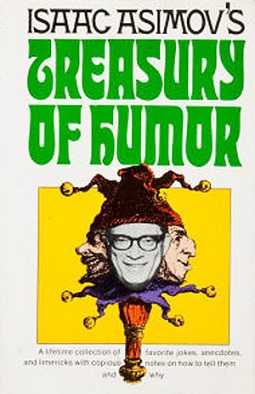
Isaac Asimov's Treasury of Humor is a humour book written by Isaac Asimov consisting of and subtitled as "A lifetime collection of favorite jokes, anecdotes, and limericks with copious notes on how to tell them and why".
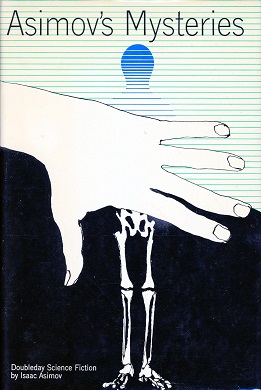
Asimov's Mysteries, published in 1968, is a collection of 14 short stories by American writer Isaac Asimov, almost all of them science fiction mysteries. The stories were all originally published in magazines between 1954 and 1967, except for "Marooned off Vesta", Asimov's first published story, which first appeared in 1939.
"The Singing Bell" is a science fiction mystery short story by American writer Isaac Asimov, which first appeared in the January 1955 issue of The Magazine of Fantasy and Science Fiction and was reprinted in the 1968 collection Asimov's Mysteries. "The Singing Bell" was the first of Asimov's Wendell Urth stories.
"Jokester" is a science fiction short story by American writer Isaac Asimov. It first appeared in the December 1956 issue of Infinity Science Fiction, and was reprinted in the collections Earth Is Room Enough (1957) and Robot Dreams (1986). It is one of a loosely connected series of stories concerning a fictional computer called Multivac.
"History" is a science fiction short story by American writer Isaac Asimov. It was first published in the March 1941 issue of Super Science Stories and reprinted in the 1972 collection The Early Asimov.
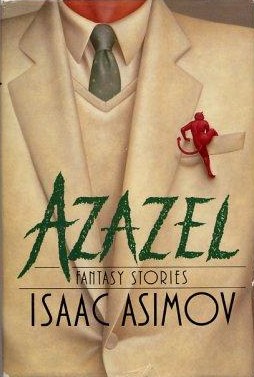
Azazel is a character created by Isaac Asimov and featured in a series of fantasy short stories. Azazel is a two-centimeter-tall demon, named after the Biblical demon.
"The Dust of Death" is a science fiction/mystery short story by American writer Isaac Asimov, first published in the January 1957 issue of Venture Science Fiction Magazine and reprinted in the 1968 collection Asimov's Mysteries.
"Super-Neutron" is a science fiction short story by American writer Isaac Asimov, originally published in the September 1941 issue of Astonishing Stories, and included in the 1972 collection The Early Asimov. Asimov originally intended the story to be the first in a series, but was unable to come up with any further story ideas.

A Catalogue of Crime is a critique of crime fiction by Jacques Barzun and Wendell Hertig Taylor, first published in 1971. The book was awarded a Special Edgar Award from the Mystery Writers of America in 1972. A revised and enlarged edition was published in 1989. Barzun and Taylor both graduated in the class of 1924 from Harrisburg Technical High School.
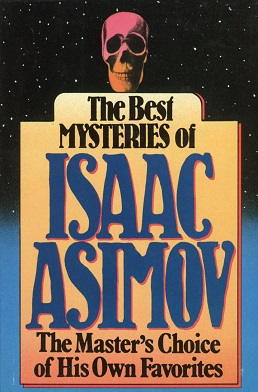
The Best Mysteries of Isaac Asimov is a collection of mystery short stories by American author Isaac Asimov. It was first published in hardcover by Doubleday in 1986, and in paperback by the Fawcett Crest imprint of Ballantine Books in September 1987.

The Asimov Chronicles: Fifty Years of Isaac Asimov is a collection of forty eight short science fiction and mystery stories and two science essays by American writer Isaac Asimov, published by Dark Harvest in May 1989.
"The Ultimate Crime" is a short story by Isaac Asimov, dealing with a minor aspect of one of the Sherlock Holmes stories of Sir Arthur Conan Doyle. It is the 24th of Asimov's Black Widowers mystery stories, and it appeared in his anthology More Tales of the Black Widowers, which collects the second dozen stories of the series. It was written specially for that book. It subsequently appeared again in Sherlock Holmes Through Time and Space, an anthology of stories written by different authors and co-edited by Asimov, and Another Round at the Spaceport Bar.
Depending on the counting convention used, and including all titles, charts, and edited collections, there may be currently over 500 books in Isaac Asimov's bibliography—as well as his individual short stories, individual essays, and criticism. For his 100th, 200th, and 300th books, Asimov published Opus 100 (1969), Opus 200 (1979), and Opus 300 (1984), celebrating his writing.
Caret is the name used familiarly for the character ^ provided on most QWERTY keyboards by typing ⇧ Shift+6. The symbol has a variety of uses in programming and mathematics. The name "caret" arose from its visual similarity to the original proofreader's caret, a mark used in proofreading to indicate where a punctuation mark, word, or phrase should be inserted into a document. The formal ASCII standard (X3.64.1977) calls it a "circumflex".









